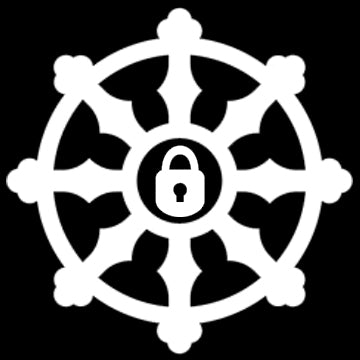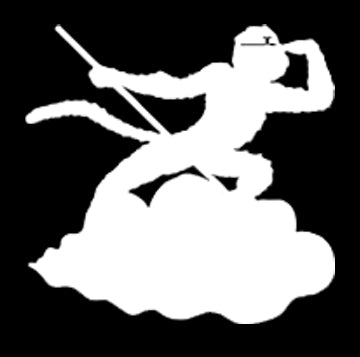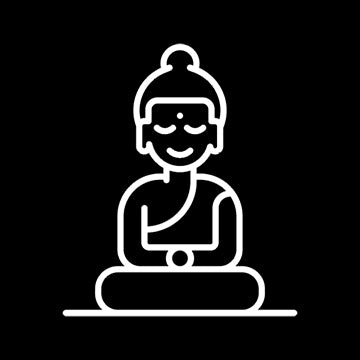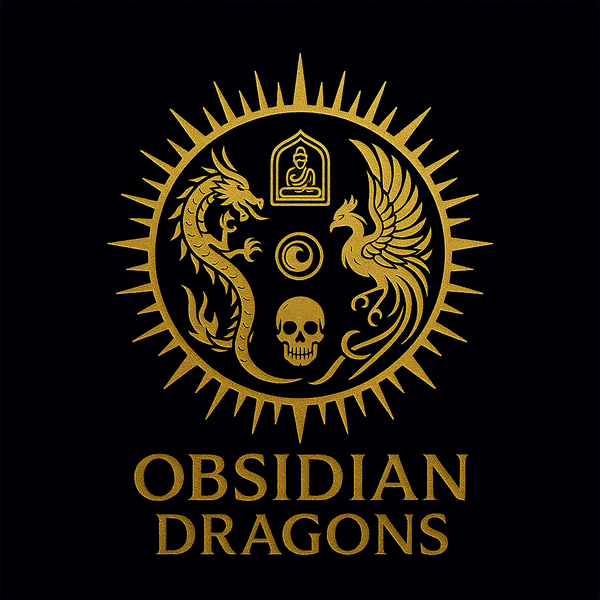MBB
Buddhist statuette, Statue Yidam Yamantaka, esoteric Vajrayana Buddhism, tantric in yab yum with his companion Vetali.
Buddhist statuette, Statue Yidam Yamantaka, esoteric Vajrayana Buddhism, tantric in yab yum with his companion Vetali.
Couldn't load pickup availability
The bronze used is called purple bronze. It is a high quality bronze, getting its characteristic color from a high copper content.
Tibetan statuette made by specialized Tibetan artisans. Dimensions: 32cm high, 24cm wide by 13cm deep. Weight of 6,300kg
The bottom unscrews to put offerings and prayers inside during the blessing like all traditional Buddhist statuettes
Rare piece.
Yamāntaka is the "destroyer of death" deity of Vajrayana Buddhism. He is sometimes conceptualized as "conqueror of the lord of death". Yamāntaka is a Sanskrit name which can be broken down into two main elements: Yama, the god of death; and destructive antaka. Thus, Yamāntaka means "destroyer of death" or "conqueror of death". Cultural heritage of Kalanta, an aspect of the Hindu god Shiva who saves his disciple Yama from the clutches of death and is seen as the deity who was the origin of the Mahamrityunjaya Mantra of Buddhism and Hinduism. His depiction mirrors Yama in many ways: very frequently riding a buffalo and often depicted with a bovine head. Because of this resemblance to Yama as well as the similarity in name, one very frequently finds texts (which would seem to be reliable sources) confusing both Yamāntaka and Yama as being the same deity when they are not. In Buddhism, "ending death" is a quality of all Buddhas because they stopped the cycle of rebirth, samsara. Thus Yamāntaka represents the goal of the Mahayana practitioner's journey to enlightenment, or the journey itself: at final awakening, one manifests Yamāntaka – the end of death. Yamāntaka is a wrathful expression of Mañjuśrī, the Samyaksambuddha of wisdom which in other contexts also functions as a dharmapala or Heruka. The statuette represents Yamāntaka in his yab yum form with his consort Vetali In this form, Yamantaka is about to defeat Yama, the god of death. Yamantaka fits into the death narrative because his defeat of Yama signals Samsara (cycle of rebirth). Buddhism believes that stopping this cycle of rebirth is the quality of Buddhas and Yamantaka represents the end goal of attaining enlightenment by ending death. Yamantaka with a wrathful face, to discourage you from returning to a cycle of bad habits. It has 7 heads side by side and two other heads above the main one. Its main head has a crown of five skulls which represents the five negative afflictions (greed, delusion, hatred, jealousy, pride) and its transmutation into positive wisdom. The flame on the skulls and the fiery details above his eyes (as well as the designs of fire in his aura) symbolize Yamantaka's power to transmute the five afflictions through flame. On the highest head is Manjushri, the Buddha of Wisdom. The yab-yum (literally father-mother) position emphasizes the union of masculine compassion and feminine wisdom. On his chest is Vetali holding a skullcap with blood which represents Great Bliss and Wisdom. He has twenty hands each holding a weapon or object. The first right hand holds the skin of an elephant as a sign of victory over narrow-mindedness. The remaining right hands also hold objects with their meanings such as the ax (to cut duality and ignorance), the dart (to pierce the design of objects), the pestle (to destroy mindfulness backwards), a harpoon (to to destroy the defects of oneself), an arrow (to pierce through the preconceived idea), the skull-club (to protect against karma) and the Khatanga blade (to adapt to the nature of the great practice), to name a few. Meanwhile, some items on his left hand include a skull cap with blood, head of Brahma (great compassion), shield (victory against Maras), leg (symbol of walk to enlightenment), lasso (endless wisdom), bell (sound of wisdom), hand (symbol for performing four activities), flags (void of the three gates as one entity).Its 16 legs are also depicted, Those under the set of feet on his right side represent the Siddhis (powers gained through meditation) and include humans, buffalo, ox, donkey, dog, sheep, and fox. Meanwhile, the feet on the left side are the eight powers vulture, owl, crow, parrot, hawk, kite, mynah and swan. At the bottom of the thangka are offerings to the three skulls. The left and right skulls are smaller and represent sperm and fertile blood, elements necessary for rebirth. The center offerings represent the five senses such as touch, sight, taste, smell and hearing.
Share










Return conditions for a Zen purchase
We offer you a money back guarantee within 14 days after delivery of your order.
If you are not completely satisfied with your purchase, please contact us to arrange a return of the product and a refund.
Except for returns, shipping is free on all orders.
Multi-column
Button text-

100% secure payment
3 times interest-free option with Scalapay
-

Free delivery in France and internationally
14 days money back guarantee after delivery (see our conditions of sale)
-

Column
Excellent customer service
Live chat
Whatsapp +33674049312
Let customers speak for us
from 919 reviews4eme pièce que j'achète et encore une fois, jamais déçue de l'unicité et de l'originalité. Coup de cœur pour ce bracelet en magnifiques molaires de mammouth, charge de vie et d'histoire. Attention pour un tout petit poignet de fille comme le mien cela peut être trop grand. N'hésitez pas à poser la question à Jeremy sur les tailles, il répond toujours et il est très réactif.

Déjà j’au été très impressionné par la qualité du site web pour tout chercheur de vérité mais également pour la disponibilité de Jérôme qui a su dépasser mes plus grandes attentes pour la commande sur mesure d’un mala en Obsidienne Œil Céleste – Dragon & Bagua Feng Shui. Gràce à ce puissant talisman je peux désormais continuer ma route sereinement. Un très grand merci sincèrement.

magnifique, puissant et apaisant, il m'aide à garder mon calme je le trouve absolument parfait!

J'ai eu l'occasion de rencontrer Jérémy sur Paris avant l'achat...très bon contact avec lui ..il sait de quoi il parle...je suis revenu vers lui pour l'achat de cette magnifique statue...elle a été emballee avec beaucoup de soin pour une expédition de chine... vraiment très satisfait de cet achat..merci

Pendentif dragon en obsidienne œil céleste - Symbole spirituel

Le collier est superbe, et ce pendentif magnifique, ses détails! et l'odeur du bois de santal que c'est agréable! Qualité extra! Contact excellent avec Jérémy, merci beaucoup pour votre gentillesse! Quelle qualité, vivement le mala !

L'objet est très joli et malgré que je ne sois pas un spécialiste, je trouve que le crystal est beau. Il n'est pas parfait et cela me rassure sur la qualité du produit qui est sensé être naturel donc imparfait.
Très bien emballé et en plus housse de rangement offerte.
MERCI

J’ai commandé un crâne de dragon, il est super beau et très puissant. Je l’adore 😍 Et l’envoi a été très rapide 🤗 merci 🙏🏻

bracelet puissant, je suis content de mon achat

Cet artisan est gémologue, il travaille avec des artisans qui sont des vrais artistes, je suis bluffé par la qualité des ouvrages sur l’argent et sa qualité. Quand à la qualité des pierres pas besoin d’être gémologue pour voir la qualité exceptionnelle des pierres, encore une fois le travail de sculpture est exceptionnel.
Mon mala traditionnel est une pure merveille dans la tradition originelle. Le ghau est une merveille qui me comble.
Bref que dire de plus :). Allez sur son site.
PS : vendeur qui connait son métier et les traditions bouddhistes ce qui est un plus en plus :)

Ce crâne est un Etre de Lumière. Attirant , inspirant , "parlant".
Il est un Ami qui tire mes pensées vers le Haut.
Ses énergies vibrent à des fréquences élevées. Il est puissant dans la douceur.
Un crâne de Dragon m'assite également. Merveilleux !

Très beaux bracelet et très puissants

Magnifique crâne givré de l'Himalaya.

cette chevalière est tres bien réalisé, avec beaucoup de détails, je suis heureux de l'avoir















